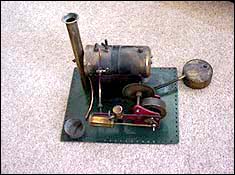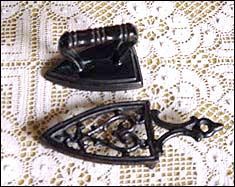Part 21 – Entertainment Dorothy – 31/08/01
In my interviews with people who grew up in the period 1925-50 the same activities have been mentioned again and again – playing with favourite toys, inventing imaginative outdoor games, swimming, boating,
singing around the piano, listening to the radio, reading books and comics, playing cards and board games, picnicking and going to films.
As Elric Hooper mentioned in Growing Up in New Zealand Part 20 children had far fewer things than today’s children.
Much of the entertainment depended on their inventiveness. This was before the advent of television, videos, or computers and therefore there were no computer or video games.
However, children’s lifestyles varied greatly according to the family’s income and where they lived. For the next two articles most of the people interviewed grew up in the towns and there is a great contrast between their lives, the childhood experiences of Jackie Steincamp
and the coming articles on the childhood of Dick Callaghan on a West Coast farm in the 1920s and of families in Public Works camps on the Kaikoura coast.
Toys and games In entertainment as in the home sexist roles prevailed and meant that there was a clear division between the games of boys and girls.
For boys playing in the sand-pit occupied hours when they were young, using packing cases to build boats and forts. Peter liked to use the crowbar as a gun to make the packing case into a gun boat – a practice very unpopular with his father who considered it too dangerous. Boys and girls spent countless hours playing on trikes scooters.
|
|
| Meccano model of pump on top of oil well Photo source Keey family |
Boys with a mechanical interest especially enjoyed train sets, miniature steam engines and building with meccano.
|
|
| Model steam engine Photo source Keey family |
Girls’ games often related to their future roles as wives and mothers. Most girls loved playing with dolls – baby dolls, little girl dolls, Topsy dolls, and Kewpie dolls – but not Barbie dolls in this era. Some had dolls’ houses with miniature furniture. Some had china teasets and entertained their dolls to afternoon tea.
|
|
| Blue and white china teaset like Mother used Photo source Keey family |
Girls’ games often related to their future roles as wives and mothers. Most girls loved playing with dolls – baby dolls, little girl dolls, Topsy dolls, and Kewpie dolls – but not Barbie dolls in this era. Some had dolls’ houses with miniature furniture. Some had china teasets and entertained their dolls to afternoon tea.
|
|
| Special teaset with HRH Princess Elizabeth and HRH Princess Margaret Rose Photo source Keey family |
Dolls’ clothes were made by adults and by girls interested in sewing. Even during the Depression this was a popular activity as they could be made from scraps of leftover fabric or wool. Girls dressed the dolls and put them in prams, beds or cradles which were often handed down from one generation to the next. They washed the clothes and as fabrics of the time needed ironing some girls even had their own Mrs Potts iron.
|
|
| Small Mrs Potts iron and stand Photo source Keey family |
Soft toys, often made at home, and Teddy bears were favourites right through the century.
Anne J recalls skipping, hop scotch, and ‘swinging deliriously’ on a single high bar at school. There were no Jungle Gyms.
Card games, like Snap, Crib, Five Hundred and patience, and board games, like Ludo, Draughts, Snakes and Ladders and Solitaire were popular with both boys and girls.
Reading Popular children’s books included annuals, yearly bound books of stories, such as the Rupert Annuals or Chums Annuals. Comics Like Little Dot, Chums and Tiger Tim were available and though to today’s readers they would seem very innocent and dull they were frowned on by many parents as encouraging laziness about reading. The stories of Pooh Bear, Milly Molly Mandy, Anne of Green Gables, Pollyanna and Biggles, Richmal Crompton’s William books, and Arthur Ransome’s stories about “messing about in boats” were very popular, as well as earlier favourites like Peter Pan, Little Women, Wind in the Willows and Treasure Island.
Radio Without the competition from television, radio was a highly valued source of entertainment.
By about 1940 Dad and Dave, an Australian serial, was on the YA programmes, and Fred and Maggie, advertising Wrigley’s toothpaste, was on the ZB stations.
During the war whole families listened at 9 p.m. to the BBC news prefaced by the striking of Big Ben. All newsreaders and announcers had to preserve their anonymity, solemnity and standard English accent.
Aunt Daisy for many years had a programme on the ZB stations at 9 a.m. and had a huge following among women at home who listened for her recipes and handy hints, and loved her friendly informality. Entertaining friends at home was very popular and women often had the table “groaning” with many kinds of home baking.
Jane recalls growing up in Wellington Games "In summer evenings at home we played rounders on the lawn. In Wellington there was a lot of wild shrubbery and bush, and broom and gorse on the hillsides. On recall I think we had a lot of freedom. We had games of tracking and the unsealed roads were good to draw arrows on.
"In my teens I remember going to Wilton Bush with a friend and sometimes climbing the hills at the back of Wadestown. A girl friend and I once got lost in the fog on the top of a hill. We became so confused we came down on the wrong side of the hill.
"The youth group at the church was very active and provided some very pleasant social life. Some Saturday afternoons we served tea for the harriers who did paper chases and some Sundays we had Bible Class teas at different churches."
Birthday parties The places that now offer parents ready-planned and catered birthday parties for their children were not in existence in this period. The more fortunate children had parties, but they were usually held at home.
Jane has vivid memories of her birthday parties. "My mother used to make an effort to give us enjoyable birthday parties. The fashion was to have a programme. My mother was a very good organiser. She baked all the food herself and wrote out a programme of activities. There was a variety of games, both active and passive. There were competitions, a little like a school exam. We played the memory game where we were shown for a short time a tray full of small objects and then had to try to remember as many as possible of the things on it. Then we had to see how many words we could make out of the letters in a word, Marmite for instance. We used to have to think of the names of flowers as answers to puzzles, or to put together the pieces of a picture, like a jigsaw puzzle. We were blindfolded to pin the tail on the donkey. There were always prizes.
"The party foods included bread and butter with hundreds and thousands on it, fruit salad, jellies and cream, pikelets, meringues and other little cakes, and a birthday cake with candles."
Music
|
|
| The pianist offers entertainment at a twenty first birthday party Photo source Christchurch family collection |
Many families owned a piano and some children, especially girls, had piano lessons. A few other instruments were taught to children and school orchestras were in their infancy. Singing round the piano was much enjoyed.
A pianola was treasured by families who could afford one. A roll was fitted in behind the front panel of the piano and then all the ‘pianist’ had to do was to pedal to keep the music flowing. Barbara T’s family had rolls of tunes from light operas – The Belle of New York, Rose Marie, The Chocolate Soldier, Miss Hook of Holland, and The Chocolate Soldier and popular piano pieces like Sinding’s Rustle of Spring that were difficult for the pianist but simple on the pianola.
On a larger scale, particularly during the war, in Christchurch “community sings” were held at lunch times every Thursday in a city theatre -partly as a way to keep up people’s morale and partly to raise funds for the war effort.
Middle class families had a wind up gramophone and 78 r.p.m. records to play on them. Gracie Fields, Vera Lynn, John Charles Thomas, Richard Tauber, Paul Robeson, Peter Dawson, Tommy Dorsey, Duke Ellington, Bing Crosby and the Andrews Sisters were among the favourites in many homes, and brass band music was popular.
Many people sang in school or church choirs or in choral societies.
Wallace remembers choir concerts. “My mother was always very interested in singing and for years sang in The Messiah. It was therefore thought that the children should be introduced to the realms of ‘real music’. My father had no idea how to sing nor showed any interest in it. Tickets were bought and one evening the four of us found ourselves in the Gods looking down on a large assembly of women all in long frocks and men with bow ties. After the concert we arrived home by tram and later my mother came in. ‘Well, did you like it?’ ‘It was great, Mum, and at half time Dad got chips.’ Lady Bracknell’s ‘In a handbag!’ had nothing on it! But at least we had the seeds sown in us to return many times and enjoy choral pieces. It was the aroma of chips that won out.”
Look for more on entertainment coming up soon.










